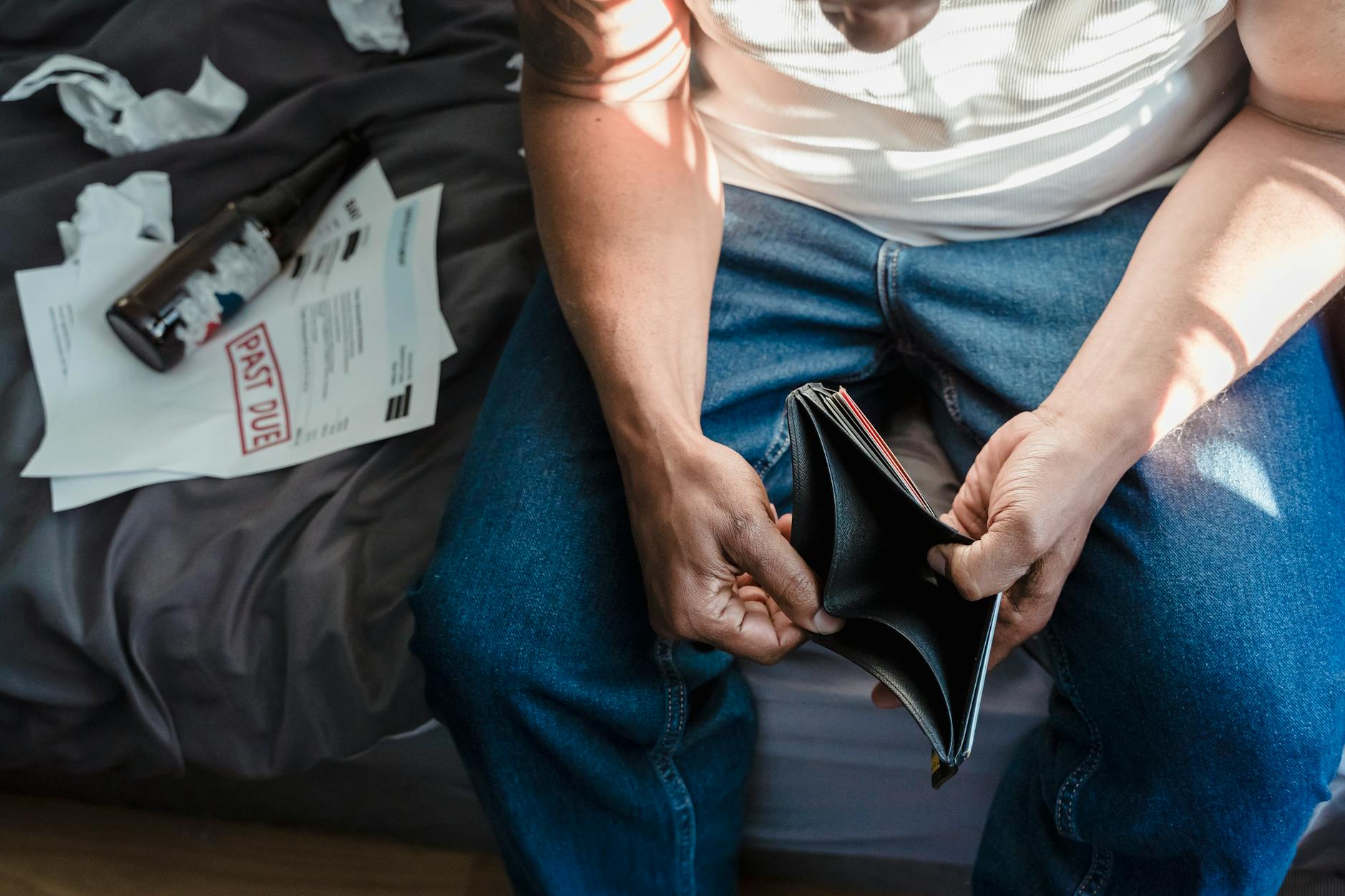
Remember when the entire financial world nearly collapsed and your parents couldn’t stop talking about their 401(k)? That wasn’t just some random economic hiccup – it was the 2008 financial crisis, and we’re still feeling its aftershocks today.
Weird thing is, for all the “never again” promises, we’ve collectively shrugged off most of the financial crisis lessons that matter to your wallet right now.
In this post, I’ll break down exactly which warning signs from 2008 are flashing again and what smart money moves you should make while everyone else is distracted by the latest market rally.
Because here’s the uncomfortable truth: the same patterns that decimated millions of retirement accounts are forming again – just wearing different clothes.
Understanding the 2008 Financial Crisis

A. The housing market bubble explained
You know that feeling when something seems too good to be true? That was America’s housing market in the early 2000s. Home prices shot up 124% between 1997 and 2006. Everyone thought the party would never end.
Banks were throwing money at people to buy homes. Interest rates were historically low. Credit was flowing like cheap beer at a college party. The prevailing wisdom? “Real estate only goes up!”
But here’s what was really happening: speculators were flipping houses like pancakes, mortgage lenders were approving anyone who could fog a mirror, and Wall Street was packaging these loans into fancy-sounding investments.
The bubble popped in 2006 when reality finally caught up. Home prices couldn’t defy gravity forever. Once they started falling, millions of Americans found themselves underwater – owing more than their homes were worth.
B. How subprime mortgages triggered the collapse
Remember those loans I mentioned? Many were “subprime” – given to folks with shaky credit histories.
These weren’t your grandparents’ mortgages. We had:
- NINJA loans (No Income, No Job, No Assets)
- Interest-only payments
- Adjustable rates that started low but skyrocketed later
- Zero down payment requirements
When housing prices stopped rising, the house of cards collapsed. People couldn’t refinance. They couldn’t sell. They couldn’t pay their mortgages when the teaser rates expired.
By 2007, foreclosures exploded. Each foreclosure pushed nearby home values down, creating a downward spiral.
C. The domino effect across global markets
The truly scary part? Wall Street had turned these risky mortgages into complex financial products called mortgage-backed securities (MBS) and collateralized debt obligations (CDOs).
These toxic assets were sold worldwide. Banks, pension funds, insurance companies – everyone was exposed.
When the music stopped, nobody knew who was holding the bad stuff. Banks stopped lending to each other. Credit – the lifeblood of the economy – froze.
Stock markets crashed. Venerable institutions like Lehman Brothers vanished overnight. Unemployment soared. Retirement accounts were decimated.
The contagion spread globally because financial markets are connected like never before. European banks holding U.S. mortgage securities failed. Export-dependent countries saw demand evaporate.
D. Key players and their roles in the crisis
This disaster had many architects:
- Homebuyers who took loans they couldn’t afford
- Mortgage brokers who pushed predatory loans for commissions
- Banks that abandoned traditional lending standards
- Wall Street firms that packaged and sold toxic securities
- Rating agencies (Moody’s, S&P) that slapped AAA ratings on junk
- Regulators who slept at the wheel
- Federal Reserve that kept interest rates artificially low
Alan Greenspan, Fed Chairman, admitted he found a “flaw” in his free-market ideology. Treasury Secretary Hank Paulson scrambled to prevent total collapse. Meanwhile, executives at failed institutions walked away with millions in bonuses.
Regular people paid the price – losing homes, jobs, and savings while the architects of the crisis largely escaped consequences.
Warning Signs We Missed

A. Early economic indicators that were ignored
We had all the warning signs right in front of us, but nobody wanted to look. Housing prices were climbing at rates that defied gravity – 20% year-over-year increases that made no mathematical sense. But instead of raising red flags, we celebrated the “boom.”
Remember those interest-only loans and the infamous NINJA mortgages (No Income, No Job, No Assets)? Banks were literally handing out money to people who couldn’t possibly pay it back. The household debt-to-income ratio hit unprecedented levels by 2007, but economists kept insisting everything was “contained.”
Then there was the yield curve inversion in 2006 – historically a nearly perfect recession predictor. Wall Street analysts dismissed it as “different this time.” Spoiler alert: it wasn’t.
B. Regulatory failures and their consequences
The regulators weren’t just asleep at the wheel – they were practically in a coma. Banks were allowed to keep risky assets off their balance sheets through special investment vehicles that nobody understood. The SEC relaxed leverage rules in 2004, letting investment banks ramp up their debt-to-equity ratios from 12:1 to an insane 30:1.
Glass-Steagall’s repeal in 1999 opened the floodgates for commercial banks to play in the investment casino. Meanwhile, derivatives grew into a $600 trillion shadow market with zero oversight.
When regulators did spot problems, they did nothing. The FBI warned about mortgage fraud as early as 2004, but prosecutions actually decreased. The Fed refused to use its authority to crack down on predatory lending, with Alan Greenspan believing markets would “self-regulate.”
C. The danger of “too big to fail” institutions
By 2008, our financial system had created monsters too dangerous to let collapse but too massive to save without extraordinary measures. The top five investment banks controlled over $4 trillion in assets – nearly a third of US GDP at the time.
When Bear Stearns imploded in March 2008, the market barely blinked. “Isolated incident,” the experts said. Then Lehman Brothers cratered, and suddenly everyone realized how interconnected everything was. AIG had sold insurance (credit default swaps) on mortgage securities to basically every major financial institution. If they failed, the entire global financial system would collapse like dominoes.
The scariest part? Today’s banks are even bigger. JPMorgan Chase, Bank of America, Citigroup, and Wells Fargo now control about 45% of all US banking assets – up from 35% before the crisis.
D. How excessive risk-taking became normalized
Wall Street’s compensation structure practically guaranteed disaster. Traders earned massive bonuses based on short-term profits with zero downside if bets went bad. One mortgage trader at Merrill Lynch received a $33 million bonus in 2006 for deals that eventually cost the bank billions.
Risk management departments became corporate jokes – ignored or overruled whenever they raised concerns. When Citigroup’s chief risk officer warned about CDO exposure in 2007, he was reassigned.
The mantra became “IBG-YBG” (I’ll Be Gone, You’ll Be Gone) – meaning grab your bonus now and don’t worry about the long-term consequences. Executives at major banks cashed out billions in stock options while publicly claiming their institutions were “well-capitalized.”
E. The role of credit rating agencies
Credit rating agencies – Moody’s, S&P, and Fitch – were supposed to be our financial watchdogs. Instead, they slapped AAA ratings (safer than US Treasury bonds!) on toxic mortgage securities.
Why? Because they were paid by the very banks issuing these securities. The conflicts of interest were staggering. Internal emails later revealed analysts knew they were rating garbage but did it anyway. One S&P employee wrote: “We rate every deal. It could be structured by cows and we would rate it.”
When housing prices inevitably fell, these AAA-rated securities turned out to be worth pennies on the dollar. Pension funds and conservative investors who trusted these ratings lost trillions. Yet remarkably, these same agencies remain at the center of our financial system today, with the same business model intact.
Failed Reforms and Continued Vulnerabilities

A. Regulations that didn’t go far enough
Remember Dodd-Frank? That massive law was supposed to prevent another 2008. Spoiler alert: it didn’t fix everything.
Banks still fought tooth and nail against the toughest provisions. The Volcker Rule, meant to stop banks from gambling with our deposits, got watered down with so many exceptions you could drive a truck through them.
The “too big to fail” problem? Those banks are now even bigger. The five largest US banks control nearly half of all banking assets—up from 30% before the crisis.
And what happened when a new administration came in? They rolled back parts of Dodd-Frank in 2018, raising the threshold for enhanced supervision from $50 billion to $250 billion in assets. Just like that, dozens of regional banks escaped tighter oversight.
B. Banking practices that remain unchanged
The bonuses are back, baby! After a brief timeout, Wall Street compensation quickly returned to pre-crisis levels. The incentive structures rewarding short-term profits over long-term stability haven’t fundamentally changed.
Banks still love leverage. They’re operating with thinner capital cushions than you might think. When Silicon Valley Bank collapsed in 2023, we saw how quickly things can unravel.
And derivatives? Those complex financial instruments that Warren Buffett called “financial weapons of mass destruction”? The market for these products is now larger than before the crisis.
C. Systemic risks still present in today’s economy
The shadow banking sector has exploded since 2008. Non-bank financial institutions now provide more credit than traditional banks but face far less regulation.
Corporate debt has ballooned to record levels. Companies loaded up on cheap debt during years of near-zero interest rates. Now that rates have risen, many firms are struggling to refinance.
Central banks painted themselves into a corner. After pumping trillions into the economy, they created asset bubbles everywhere from housing to stocks to crypto.
Interconnectedness remains a massive problem. Financial institutions are still deeply linked, meaning troubles at one can quickly spread to others—just like in 2008.
How These Unaddressed Issues Affect Your Finances

A. Impact on your retirement savings
Remember that 401(k) you’ve been faithfully feeding for years? The unresolved issues from 2008 are silently eating away at it right now.
The ultra-low interest rates that followed the crisis forced millions of Americans to take on more risk just to maintain decent returns. Your retirement account likely shifted from safe bonds to volatile stocks whether you realized it or not.
And those “too big to fail” banks? They’re even bigger today. When (not if) another crisis hits, your retirement savings will face the same rollercoaster ride—only the drops might be steeper.
The average American lost 25% of their retirement savings in 2008. Many who were near retirement had to work an additional 5-7 years to recover. Now imagine that happening with even less regulatory protection.
B. Changes in mortgage and lending practices
Got a mortgage recently? You probably jumped through twice as many hoops as pre-2008 borrowers, yet somehow still face significant risks.
Banks now require mountains of documentation, higher credit scores, and larger down payments. But they’ve also created new, complex financial products that carry hidden risks.
The “qualified mortgage” rules implemented after 2008 were supposed to protect you. Instead, they’ve simply pushed risky lending into less regulated corners of the market.
First-time homebuyers now spend an average of 45% more time securing financing than in 2007, while facing lending terms that can change dramatically if economic conditions shift.
C. Job security in the modern economy
The gig economy isn’t just a trendy term—it’s the direct result of how companies responded to 2008.
When the economy tanked, businesses discovered they could replace full-time employees with contractors. No benefits, no long-term commitments, no problem (for them, anyway).
Today, approximately 36% of workers participate in the gig economy, often without healthcare, retirement benefits, or job security. This fundamental shift didn’t happen by accident—it was corporate America’s “lesson learned” from the crisis.
And those jobs that were shipped overseas during the recovery? They’re not coming back, regardless of political promises.
D. Hidden risks in your investment portfolio
You think your investments are diversified? Think again.
The financial industry has created increasingly complex investment products that make it nearly impossible to understand what you actually own. Many “diversified” ETFs and mutual funds hold essentially the same underlying assets.
Those fancy algorithms managing your robo-advisor account? They’ve never been tested in a true financial meltdown.
Meanwhile, high-frequency trading firms can front-run your orders and market makers can pull liquidity exactly when you need it most—problems that regulators acknowledged but never adequately addressed after 2008.
When markets plunge, these hidden connections mean your supposedly “balanced” portfolio might sink in unison.
Protecting Yourself in Today’s Financial Landscape

Building a crisis-resistant financial plan
The painful truth? Most of us are one economic shock away from serious trouble. I’m not trying to scare you, but the 2008 crisis wasn’t a freak accident – it was a preview.
Start with an emergency fund covering 6-9 months of expenses – not the standard 3-6 months experts pushed before 2008. Why? Because when things collapsed, people stayed unemployed much longer than expected.
Create a financial stress test for yourself:
- Could you survive losing your job for a year?
- What if your house value dropped 40%?
- What happens if interest rates double?
Don’t just diversify investments – diversify income streams. The people who weathered 2008 best had multiple ways to make money. Side hustles aren’t just trendy; they’re financial armor.
Smart debt management strategies
Debt isn’t inherently evil, but toxic debt will drown you when the economy tanks.
The 30/30/3 rule keeps you safer than most:
- Housing payments under 30% of gross income
- All debt payments under 30% of take-home pay
- Don’t buy a house costing more than 3× your annual income
Fixed-rate anything beats adjustable-rate everything. Remember how many homeowners got crushed when their ARMs reset in 2008?
Pay off high-interest debt aggressively, but don’t rush to eliminate low-interest fixed-rate loans in good economic times. That cash might be better used building liquid reserves you can actually access in a crisis.
Diversification techniques beyond traditional advice
The old “60/40 stocks/bonds” portfolio got hammered in 2008. Both asset classes can fall together when systemic risk hits.
Think in terms of correlation, not just asset class. During crises, previously uncorrelated investments suddenly move in lockstep.
Consider:
- Counter-cyclical assets that historically move opposite to market trends
- Geographic diversification outside your home country
- Alternative assets like specialized REITs or commodities that respond to different economic forces
Rebalance ruthlessly. Most people emotionally can’t sell winners to buy losers, but that discipline is exactly what preserves wealth during downturns.
When to be cautious about “innovative” financial products
Wall Street loves creating complex products with hefty fees. Remember CDOs and mortgage-backed securities? Regular people bought them without understanding the risks.
Red flags to watch for:
- Products promising “market returns with no risk”
- Investment structures you can’t explain to a 12-year-old
- Anything with multiple layers of fees
- Products heavily marketed during bull markets
If someone tells you “this time it’s different” – run. Those four words preceded every financial disaster in history.
Ask bluntly: “Who profits if this goes wrong?” If the answer isn’t clear, walk away.
Creating your personal financial safety net
Your safety net needs redundancy. Government programs and corporate promises failed many in 2008.
Build protection through:
- Multiple bank relationships (staying under FDIC limits at each)
- A professional network that spans industries
- Practical skills that remain valuable during downturns
- Physical assets you control directly
Maintain access to credit before you need it. In 2008, banks slashed credit lines overnight for even their best customers.
Update your skills constantly. The most valuable crisis-proof asset isn’t gold or real estate – it’s your ability to create value in changing conditions.

The 2008 financial crisis continues to cast a long shadow over our economy today, largely because many of its fundamental lessons remain unheeded. Despite the catastrophic market collapse, the warning signs we collectively missed—excessive leverage, predatory lending, and regulatory gaps—persist in different forms. Failed reforms and half-measures have left our financial system vulnerable to similar systemic risks, directly impacting your savings, investments, and long-term financial security.
Protecting yourself requires vigilance and informed decision-making in today’s financial landscape. Diversify your investments beyond traditional markets, maintain reasonable debt levels, and stay informed about financial policies that affect your economic future. Remember that the greatest risk isn’t another crisis occurring—it’s facing that crisis unprepared. By understanding these ignored lessons, you can better position yourself to withstand financial turbulence while advocating for the meaningful reforms our system still desperately needs.
For more AI-powered historical insights, explore Time Genius’s interactive timeline tool.


